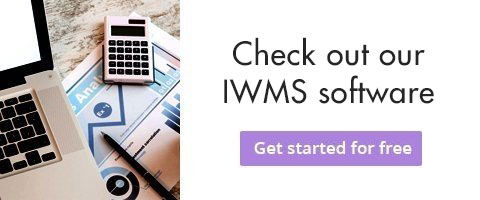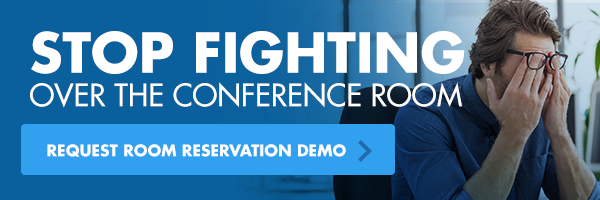Does Your Office Have The Right Mix Of Conference Rooms?


We’ve all been there: despite having plenty of conference rooms, not a single one is available the moment we need one for an important meeting.
In a recent benchmarking report, architecture-engineering firm HOK provides some insights about why this happens.
One reason is that the sizes and types of conference rooms aren’t meeting the needs of the workforce.
Here’s why and what you can do about it.
What Is The Right Mix of Conference Room Space?
According to HOK’s findings, many workplaces have an abundance of large conference rooms and a shortage of smaller spaces. Consider these statistics:
- Nearly 75 percent of all meetings are attended by two to four people
- Almost 50 percent of all meetings are between just two people
- More than half of all meeting rooms are designed to accommodate six or more people
- As a result of this disconnect, the average conference room is unoccupied for over 70 percent of the workday
In other words, what most employees need most isn’t a large conference room but privacy. Sitting at a huge table for a simple two-person conversation can feel awkward, and employees may be reluctant to claim such a large space.
The solution? Have a variety of meeting spaces and make those spaces flexible so they can accommodate groups of different sizes.
Here’s how to maximize meeting conference room utilization in your workplace.
The 4 Types of Meeting Spaces Your Company Needs
In reality, most workplaces have plenty of conference rooms; they’re just not designed properly.
Another common misconception is that it’s better to have mostly larger conference rooms so more people can use them. But it’s not just about the dimensions of a space; the design and contents of the room are important, too.
To best meet the needs of your employees, your workplace should have the following mix of meeting spaces and conference rooms:
One-on-One Spaces
These spaces are important for offering privacy so employees can meet behind closed doors or take a call without being interrupted. They can be as simple as a set of comfortable chairs with a table and easy access to outlets.
Huddle Areas
Huddle areas are used for brainstorming sessions and collaborative work between smaller groups. Because these spaces are more casual and designed to inspire creativity, they should have comfortable seating and a whiteboard. Huddle areas can either be an enclosed room or just a designated space in the office where others working nearby won’t be distracted by the noise of the meeting.
Small Conference Room
According to HOK’s report, the average small meeting room is about 150 square feet and is designed to seat up to six people. Small conference rooms are for more formal meetings and meetings about more confidential matters. A small conference room should have a TV or projector so colleagues can share presentations as well as video conferencing technology to make it easy for remote employees to participate.
Large Conference Room
Large conference rooms are generally reserved for client visits or more formal meetings. They can also be used for employee onboarding or training sessions. The average size of a large conference room is around 500 square feet and seats 13-20 people. Large meeting rooms should also have a TV or projector and video conferencing technology.
If your company has multiple large conference rooms, at least one should be designed in a way that it can be easily converted into two separate spaces or adjusted to accommodate a smaller group. Otherwise, you risk having a large room that sits empty for the majority of the day.
Using Conference Room Reservation Software to Improve Meetings
While having the right mix of meeting rooms is crucial, your workplace is still likely to have a lot of underutilized space. That’s why conference room reservation software is so important.
Conference room reservation software allows employees to see the availability of every meeting space in the office at a glance, right from their phone, computer or a digital panel outside the room.
It should integrate with existing calendar tools like Microsoft Outlook so employees don’t have to toggle back and forth between different systems.
It should also show the size of the room, seating capacity and the equipment inside. If a team’s meeting room is already in use, a manager can use conference room reservation software to find another space, confirm it has the technology needed for the meeting and can reserve the room instantly.
The best conference room reservation software also gives insight into actual utilization.
It should show you which spaces are used most often and the average number of employees in attendance. With this information, you can make data-driven decisions about your conference room mix instead of relying on assumptions about what your workforce needs. This leads to less friction, happier employees and less wasted space in the workplace.
With packed schedules and an increasingly mobile workforce, just getting everyone together in one room can be a challenge at times. But reserving the room shouldn’t be. And with conference room scheduling software, it will be the easiest part of your day.


